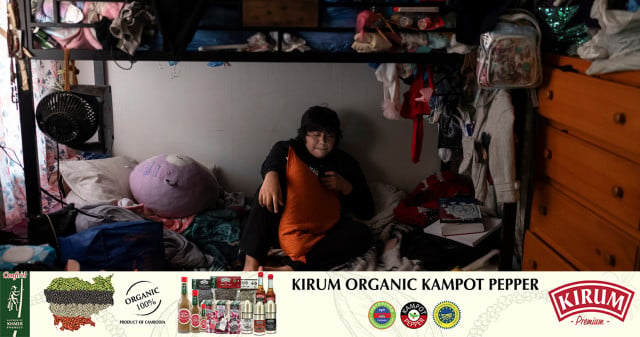Flooding in Parts of Phnom Penh Raises Issues for the Authorities, Land Developers and Residents to Reconsider!

- Cambodianess
- October 16, 2020 6:52 AM
When it comes to flooding in some provinces, local residents simply have no one to blame for this happening. They think that it is just a natural occurrence, which happens in many other countries as well. However, flooding in some parts of Phnom Penh pretty much remains something that people usually complain about. Samnang and Sothie have been hearing a great deal lately about this issue on social media, local coffee shops and in the communities where they live. Why some parts of Phnom Penh still get flooded during huge rainfalls?
Sothie: Hey Samnang! By the time you left to go home at the end of the day, did your motorbike’s engine end up under water in the flooded streets?
Samnang: It was not just flooded. It completely broke down. I spent tens of thousands of riels to get it fixed.
Sothie: How about your house?
Samnang: You know what? Because of the heavily flooded roads and the intense traffic congestion, I spent more than two hours just to get home. And when I got home, the ground level was, not surprisingly, flooded since the road in front of my house has been raised and is now higher than the land on each side.
Sothie: The roads are frequently rebuilt in order to construct stormwater drainage. If that is the case, then why would there still be so much flooding during heavy rainfalls?
Samnang: Well, yes. I have seen the same thing. Perhaps, several factors contribute to flooding such as the fact that that rainfalls are simply bigger, the storm drains cannot channel the water fast enough, or the water pumping stations are overpowered. Maybe, the slow water-pumping capacity is due to blockage by rubbish and…
Sothie: And…what Samnang? If you want to add more reasons, please do so.
Samnang: Just like what you have heard from the experts. Phnom Penh’s geographical terrain is shaped like the curvature of a frying pan. On the edge are the man-made dams. So, when rainfalls increasingly intensify, pumping rainwater can get complicated. I have seen that the authorities have deployed many water-pumping vehicles to help handle the situation, but it could not be entirely solved. This recent rainfall fell over the city for hours. This was the first time in over a decade that Phnom Penh was experiencing such a huge rainfall. On the other hand, I have heard some architects say that, with the expanding introduction of concrete, the rate of water absorption into the ground is reduced.
Sothie: So, does flooding in the city has anything to do with the demolition of the water reservoirs such as the lakes?
Samnang: Your question is complicated for me to answer because I am not an expert in that field.
Sothie: Yes, I know. However, based on your own point of view, does the flooding in Phnom Penh have something to do, even if only partly, with the demolition of the water reservoirs in and around Phnom Penh?
Samnang: I believe this is not entirely related to the demolition of the water reservoirs. Years and years ago, many lakes in and around the city have been filled such as Beoung Kang Kong, Beoung Bra Lit, Beoung Kak, Beoung Tra Bek—beoung means lake—or even O’Russey—o means stream. Every development comes with some negative side effects. However, people also benefit from those developments. It should be noted that the duration of floodings in Phnom Penh has been reduced compared to 10 years ago. This is due to the improvement of the sewage system and water pumping capacity. I also want to point out that, in some cities in Asia such as in Thailand, for example, as well as in some cities in Europe, flooding still occurs whenever there are huge rainfalls. When compared to roughly a decade ago, the center of Phnom Penh seems to experience flooding of shorter duration. However, the region west of Phnom Penh, that is, the outskirt somehow seems to experience more intense floods. On the other hand, people who live in the Borey—newly developed area where buildings have been purposely built on elevated ground and are equipped with a better infrastructure—seems to experience no flooding at all.
Sothie: So, what you are saying is that some places are flooded and some places are not?
Samnang: Yes, that is true. There are places that continue to get flooded. Also, there are places that have been protected from flooding through the renovation of the stormwater system and the canals.
But saying this does not mean that the authorities, the land developers and the population should stop thinking about this issue.
These ongoing rainfalls should act as a reminder that it is important to have an in-depth look at the situation. Should every new land development be concerned about the surrounding population? Should land developers be concerned about people who live lower than newer elevated areas? What should the authorities do in order to construct a sewage system, which is capable of diverting the water out of the city while maintaining improvements in the newly-developed areas and yet keeping the older ones from experiencing flooding or any other kind of disasters. The people themselves should also look into not disposing of garbage carelessly by dropping rubbish into the stormwater system. In conclusion, these rainfalls are intense and it is quite hard to blame the situation solely on one person. Cool down, Sothie!
Sothie: So, you just want me to put up with the suffering.
Samnang: Generally speaking, no one is happy, Sothie. But what I am telling you is what is happening at the moment. Nothing is perfect in this world. Sometimes, you just have to put up with situations.
Sothie: Come on, Samnang! I do share your concerns over flooded streets and your flooded house. But I asked you about floods in Phnom Penh and now you’re lecturing me about life…















